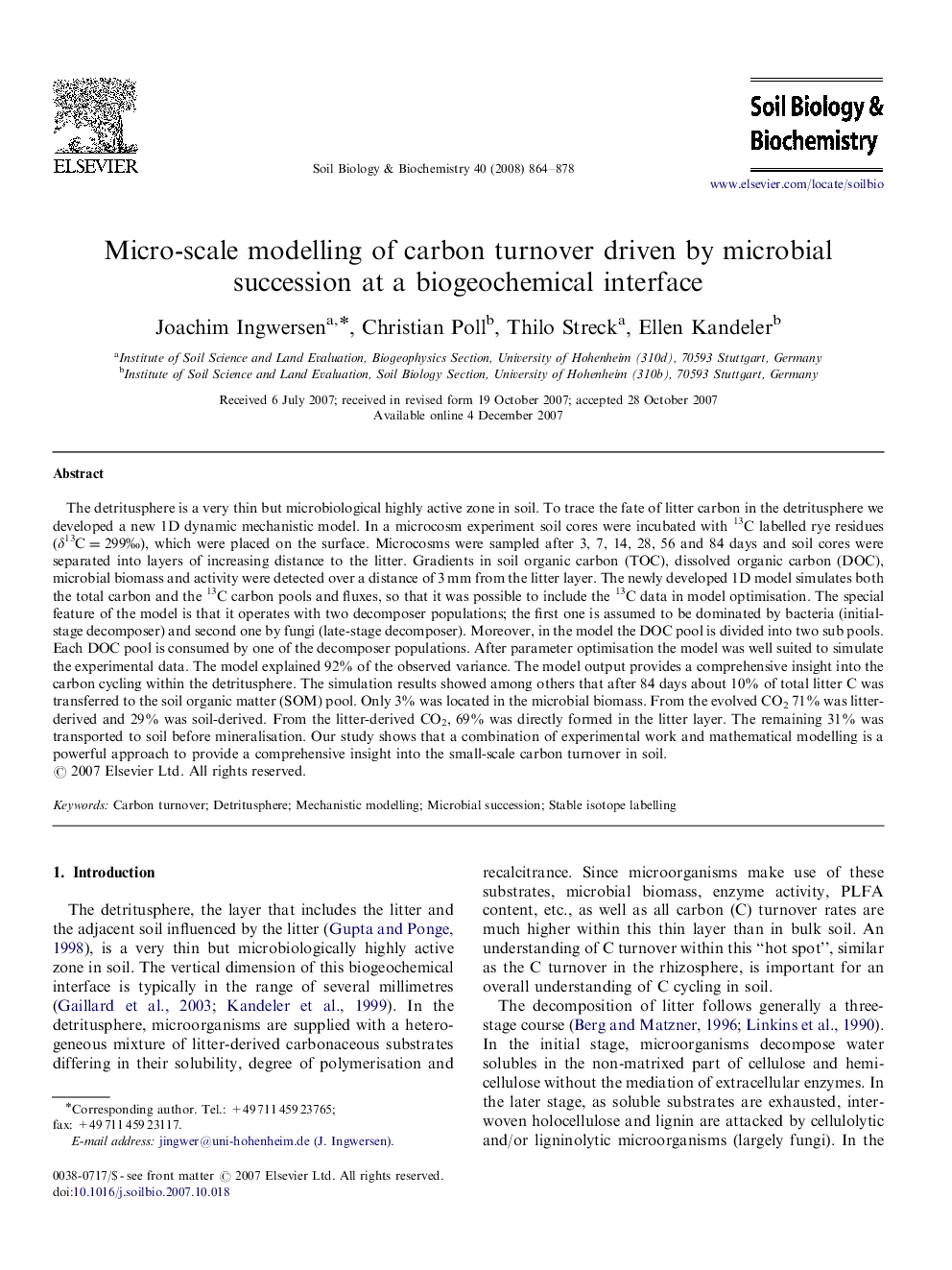| کد مقاله | کد نشریه | سال انتشار | مقاله انگلیسی | نسخه تمام متن |
|---|---|---|---|---|
| 2026439 | 1070030 | 2008 | 15 صفحه PDF | دانلود رایگان |

The detritusphere is a very thin but microbiological highly active zone in soil. To trace the fate of litter carbon in the detritusphere we developed a new 1D dynamic mechanistic model. In a microcosm experiment soil cores were incubated with 13C labelled rye residues (δ13C=299‰), which were placed on the surface. Microcosms were sampled after 3, 7, 14, 28, 56 and 84 days and soil cores were separated into layers of increasing distance to the litter. Gradients in soil organic carbon (TOC), dissolved organic carbon (DOC), microbial biomass and activity were detected over a distance of 3 mm from the litter layer. The newly developed 1D model simulates both the total carbon and the 13C carbon pools and fluxes, so that it was possible to include the 13C data in model optimisation. The special feature of the model is that it operates with two decomposer populations; the first one is assumed to be dominated by bacteria (initial-stage decomposer) and second one by fungi (late-stage decomposer). Moreover, in the model the DOC pool is divided into two sub pools. Each DOC pool is consumed by one of the decomposer populations. After parameter optimisation the model was well suited to simulate the experimental data. The model explained 92% of the observed variance. The model output provides a comprehensive insight into the carbon cycling within the detritusphere. The simulation results showed among others that after 84 days about 10% of total litter C was transferred to the soil organic matter (SOM) pool. Only 3% was located in the microbial biomass. From the evolved CO2 71% was litter-derived and 29% was soil-derived. From the litter-derived CO2, 69% was directly formed in the litter layer. The remaining 31% was transported to soil before mineralisation. Our study shows that a combination of experimental work and mathematical modelling is a powerful approach to provide a comprehensive insight into the small-scale carbon turnover in soil.
Journal: Soil Biology and Biochemistry - Volume 40, Issue 4, April 2008, Pages 864–878